When a Simi Valley jury announced the “not guilty” verdicts in the case of four police officers charged in the beating of African American motorist Rodney King to a packed courtroom on April 29, 1992, Los Angeles erupted in a firestorm of anti-police protest. Looting, burning, and violence lasted six days in what became the largest episode of civil unrest in American history.
For many across the country who watched television coverage, the Los Angeles rebellion, as the event has been called by some, exposed the persistent problems of racism, poverty, and inequality in American life.
With recent attention focused on police brutality, mass incarceration, and Black Lives Matter, the twenty-fifth anniversary of the 1992 uprising provides an opportunity to reflect on the meanings of race and justice in American society. Understanding the grievances that fueled the rebellion and the response of law enforcement and political officials offers important lessons for how to understand and respond to the current political moment and policing crisis.
On March 3, 1991, four LAPD officers beat Rodney King using aluminum batons and Tasers. Unbeknownst to the officers, a bystander filmed the beating and gave the tape to a local news station. The video, which circulated on television around the world, provided startling evidence of the LAPD’s excessive use of force and confirmed complaints of police brutality made by black and Latino residents during the 1970s and 1980s.
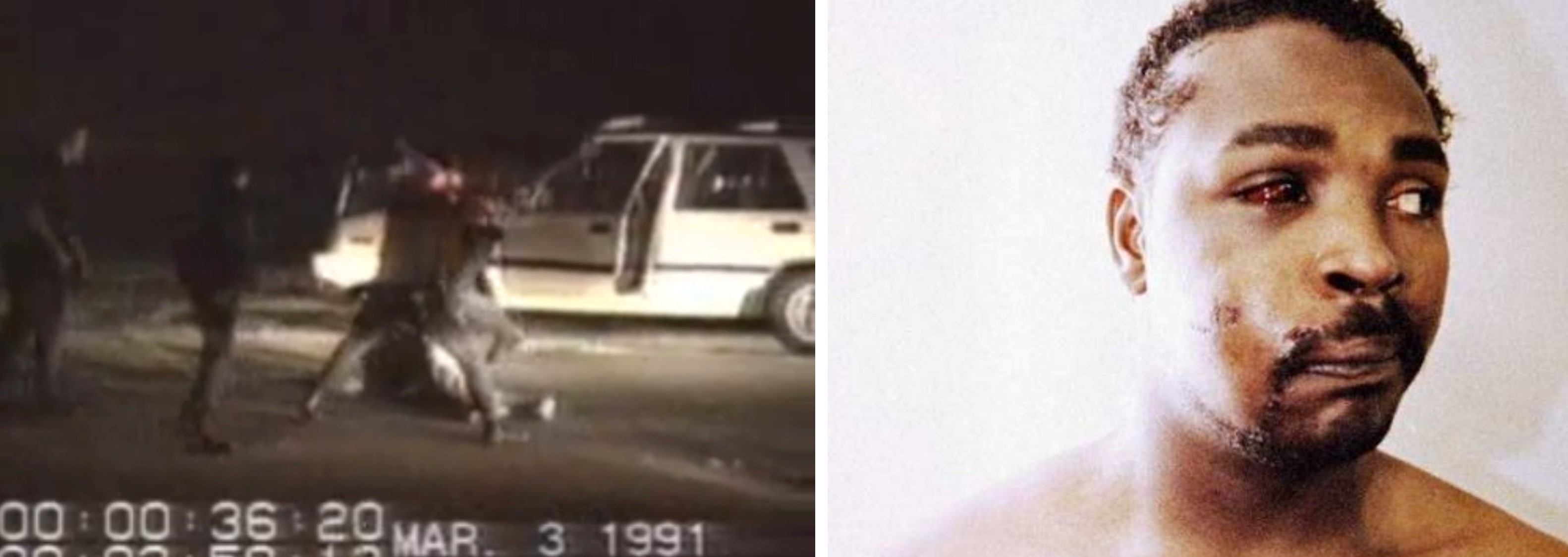
George Holliday's footage of Rodney King being beaten by police in 1991 (left), and King's injuries (right).
In response to the public outcry surrounding the beating, Mayor Tom Bradley, who had been elected the city’s first African American mayor in 1973, formed the Independent Commission on the Los Angeles Police Department on April 1, 1991. Bradley appointed former FBI Director Warren Christopher to lead the investigation of the LAPD’s policies, practices, and culture.
The Christopher Commission report, published in July 1991, pulled few punches. It condemned the LAPD’s discriminatory practices and revealed a racist culture within the department that contributed to the use of excessive force in black communities.
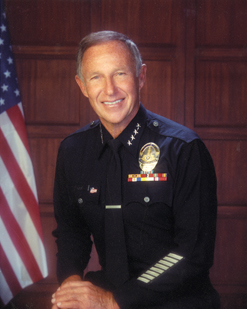
The commission recommended the resignation of Chief of Police Daryl Gates, the adoption of community policing, new training and supervisory procedures, and a series of structural reforms to make the department more accountable to the mayor and Board of Police Commissioners. In early June 1992, voters overwhelmingly passed Charter Amendment F, which reformed the City Charter by strengthening civilian oversight of the police department and limiting the tenure of the chief of police to two five-year terms.
Yet, these measures were too little and too late.
The trial of the four LAPD officers, held in the nearly all-white suburban enclave of Simi Valley, became a judgment on the state of policing, racism, and the criminal justice system in Los Angeles and the nation. The jury, composed of ten whites, one Latino, and one Filipino-American, included no African Americans. After the announcement of the not guilty verdicts, thousands of residents took to the streets of South Central Los Angeles and in front of LAPD headquarters near downtown, declaring “no justice, no peace.”
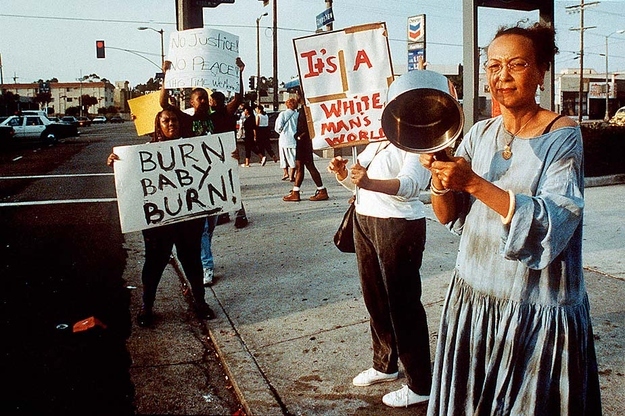
Protesters in Los Angeles after police found not guilty. (Photo from framework.latimes.com)
The acquittal came on the heels of Judge Joyce Karlin’s sentence of probation and community service for Korean merchant Sun Ja Du after she killed Latasha Harlins, an African American teenager. Karlin’s leniency combined with the history of police shootings and brutality—most notably the 1979 police killing of thirty-nine-year-old African American Eula Mae Love and the 1988 gang sweeps known as Operation Hammer that resulted in the indiscriminate arrest of thousands of young African American men—reflected the racially discriminatory and unequal criminal justice system.
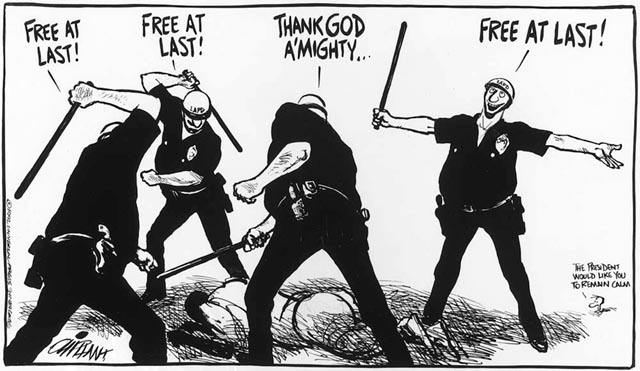
As one Inglewood Blood gang member told the writer-historian Mike Davis: “my homies be beat like dogs by the police every day. This riot is all about the homeboys murdered by the police, about the little sister killed by the Koreans, about twenty-seven years of oppression. Rodney King just the trigger.”
The uprising also occurred within the context of an economic recession that hit African Americans and Latinos particularly hard. Southern California lost seventy-thousand manufacturing jobs between 1978 and 1982 and another five-hundred-thousand jobs during the recession of the late 1980s and early 1990s. Unemployment rates for blacks in 1992 hovered between forty and fifty percent and a poverty rate of over thirty percent.
In the days after the verdict, looting and burning engulfed vast swaths of the city. It reached Koreatown, Hollywood, and parts of the San Fernando Valley nearly thirty miles away from the predominantly African American neighborhood of South Central where the uprising began.
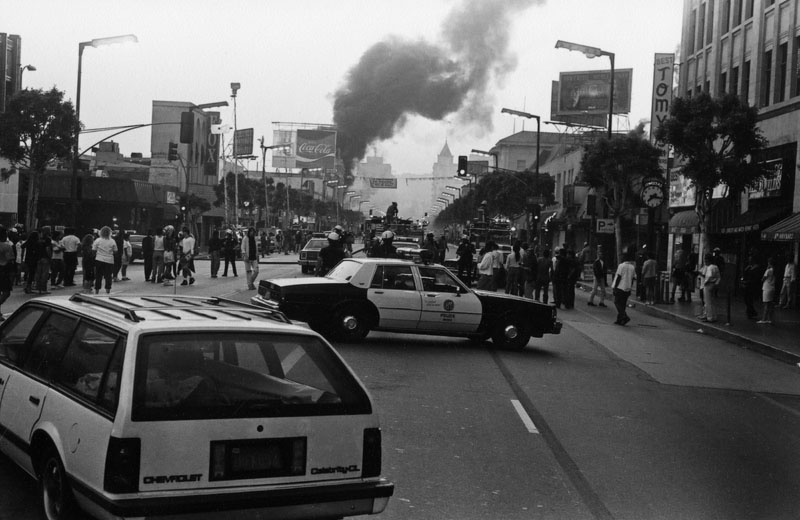
Fires during the 1992 Los Angeles rebellion. (Photo by Gary Leonard, Los Angeles Public Library)
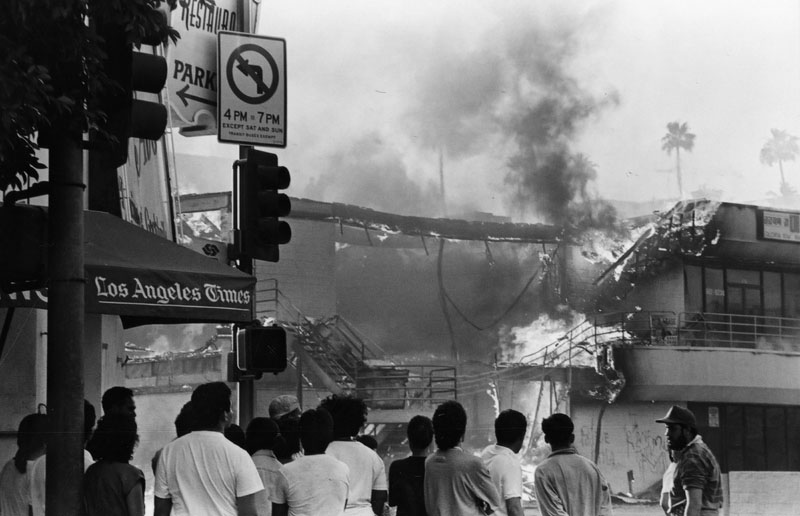
Onlookers watch as a building burns, 1992. (Photo by Gary Leonard, Los Angeles Public Library)
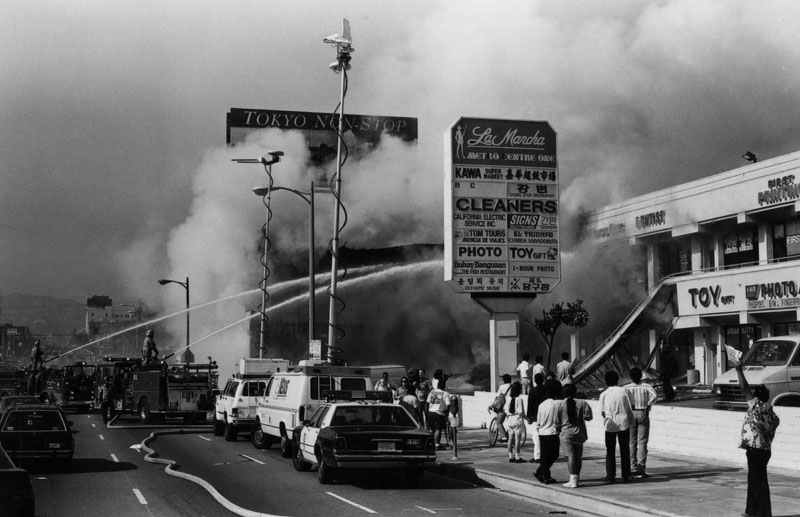
In contrast to the urban uprisings of the 1960s, this was a multiracial rebellion. Studies found that 50.6 percent of those arrested were Latino and 36.2 percent were African American. Many of the targets of violence were Latino immigrants—or perceived immigrants—and Korean shopkeepers.
City officials and LAPD commanders were unprepared for the violence despite Chief of Police Gates’s claim that “no one knows how to handle a riot better than I do.” After the initial episodes of violence, however, Gates attended a fundraiser with opponents of police reform in the posh West Side neighborhood of Brentwood rather than organizing his department’s response.
As officers retreated from the areas where violence had broken out, such as the infamous intersection of Florence and Normandie, the uprising accelerated and the city spun out of control.
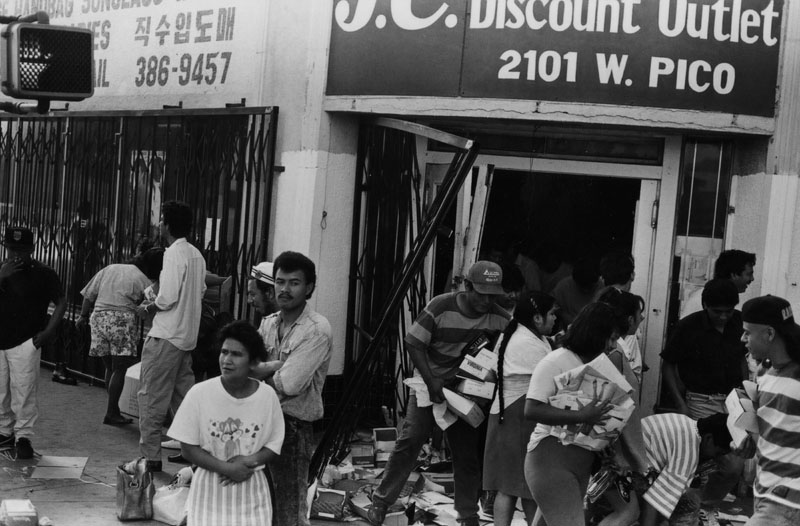
Looting during the Los Angeles rebellion, 1992. (Photo by Gary Leonard, Los Angeles Public Library)
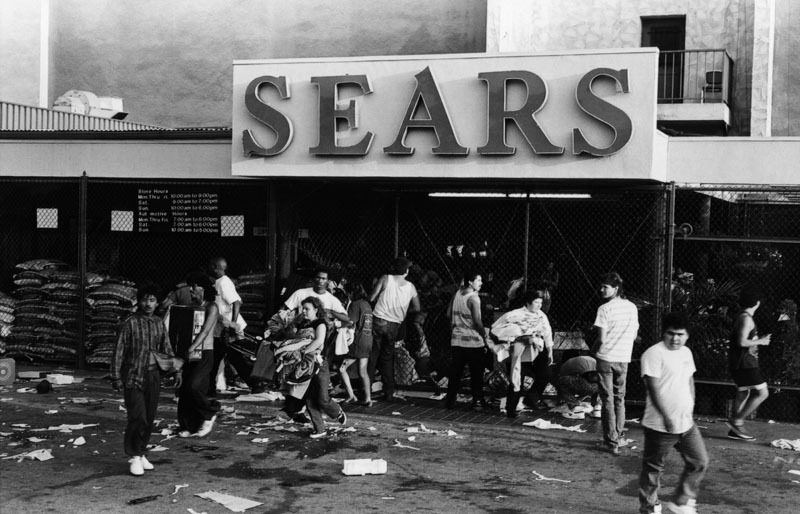
Looting during the Los Angeles rebellion, 1992. (Photo by Gary Leonard, Los Angeles Public Library)
Media outlets, law enforcement officials, and politicians portrayed participants as criminals without legitimate grievances. President George H. W. Bush blamed the violence on gang members and criminals. In a public address to the nation, President Bush declared the violence was “not about civil rights” or a “message of protest,” but “the brutality of a mob, pure and simple.”
By framing the uprising as one of lawlessness, criminality, and illegality, officials legitimated aggressive policing, mass arrest, and incarceration. But first the LAPD required federal reinforcements. It took over 20,000 law enforcement and military forces to stop the civil unrest, which resulted in 16,291 arrests, 2,383 injuries, at least 52 deaths, 700 businesses burned, and nearly $1 billion in damage.
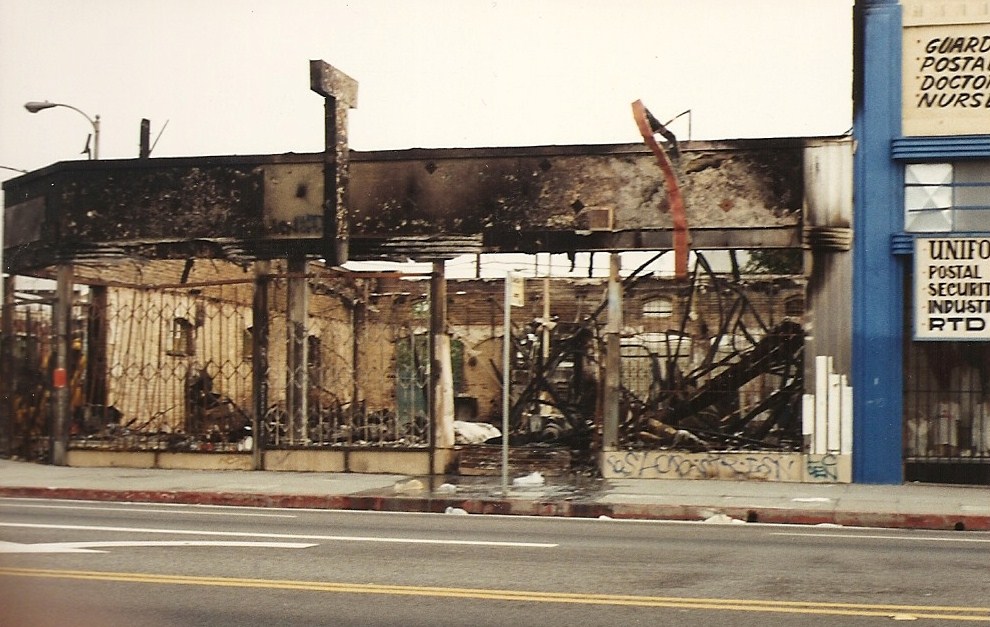
One of around 700 burned shops in the aftermath of the Los Angeles rebellion, 1992.
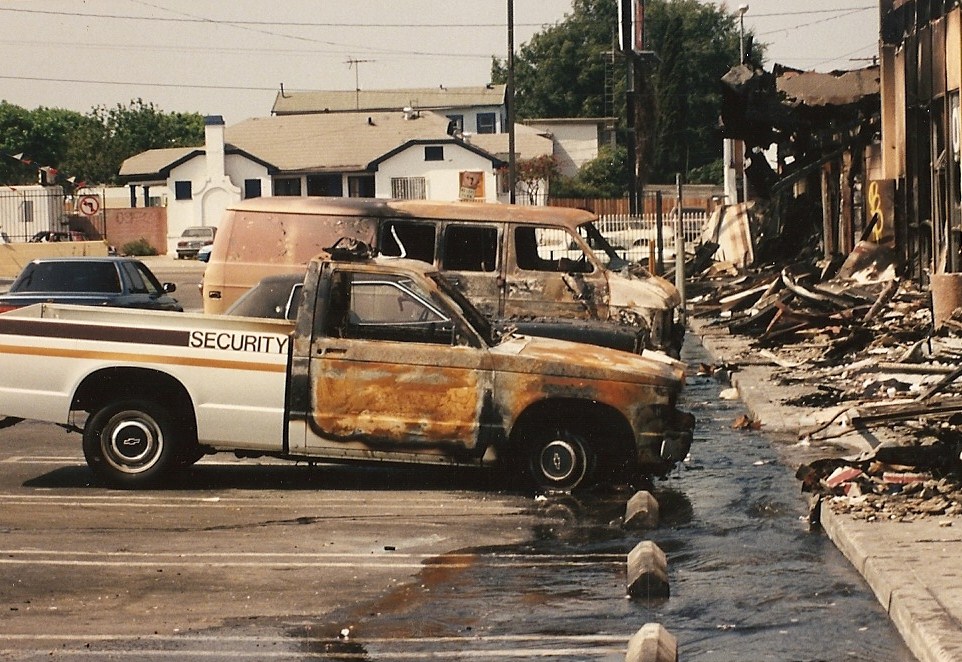
Destroyed cars and store fronts, 1992.
Cooperation between local and federal law enforcement agencies also led to the arrest, detention, and deportation of undocumented immigrants. Nearly 400 INS agents worked with the police and conducted dragnet sweeps in the predominantly immigrant Pico Union neighborhood. Of the 16,291 arrests, some estimated that 1,240 were undocumented immigrants, many of whom were handed over to the INS for immediate deportation. Such cooperation suggested the LAPD had violated its stated policy of not making arrests based on immigration status.
When the violence ended, Mayor Bradley appointed former CIA and FBI director William Webster to lead yet another commission to study the LAPD’s response to the civil unrest. The commission focused on the LAPD’s lack of preparation, poor intelligence, and inability to control the uprising. Finding new ways to mobilize police power and “rapid containment” took precedence over an investigation into the roots of police-community conflict.
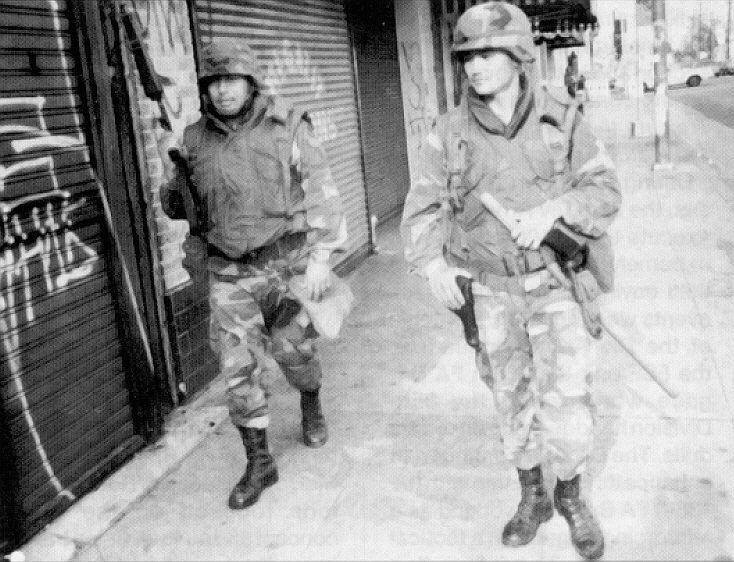
Soldiers from the California Army National Guard patrol the streets of Los Angeles, 1992.
After 160 days of investigation, neighborhood meetings, and interviews with police officers the commission released its report, “The City in Crisis,” on October 21, 1992. Instead of interrogating police practices and the criminal justice system that produced the conditions of the unrest, however, the report’s recommendations focused on the ways that law enforcement could control future civil unrest.
While Mayor Bradley promoted economic development and private investment through the non-profit organization Rebuild L.A. as the solution to the city’s woes, punitive solutions meant to ensure the restoration of law-and-order prevailed as the dominant response to the unrest.

Soldiers patrolling Los Angeles by vehicle (left), and on foot (right), 1992.
City and police officials also vied for federal criminal justice grants that linked social spending to funding for law enforcement. President Bush provided federal funds to help the city rebuild and made Los Angeles a target city for his administration’s primary crime prevention program, Operation Weed and Seed, which integrated social service measures with increased spending for the police.
Mired in controversy, chief Gates resigned on June 30, 1992. The Board of Police Commissioners appointed Willie Williams, a proponent of community policing, as the first African American chief of the LAPD.
Hopes that Williams would lead a new era in the policing of Los Angeles were short-lived.
The Board of Police Commissioners refused to reappoint Williams for a second term in 1997 after personal scandals and opposition from rank-and-file officers. Community policing initiatives did little to shift decision-making over the nature of policing to residents. The LAPD also became embroiled in another controversy during the Rampart corruption scandal in the late-1990s, which led to a federal consent decree requiring Department of Justice oversight of the department.
Public safety funding through the 1990s also continued to support punitive policies focused on arrest and incarceration. California passed one of the nation’s strictest three strikes laws in 1994 requiring life sentencing for a third arrest for the most minor of infractions, leading to a rise in incarceration and a vast expansion of California’s prison population.
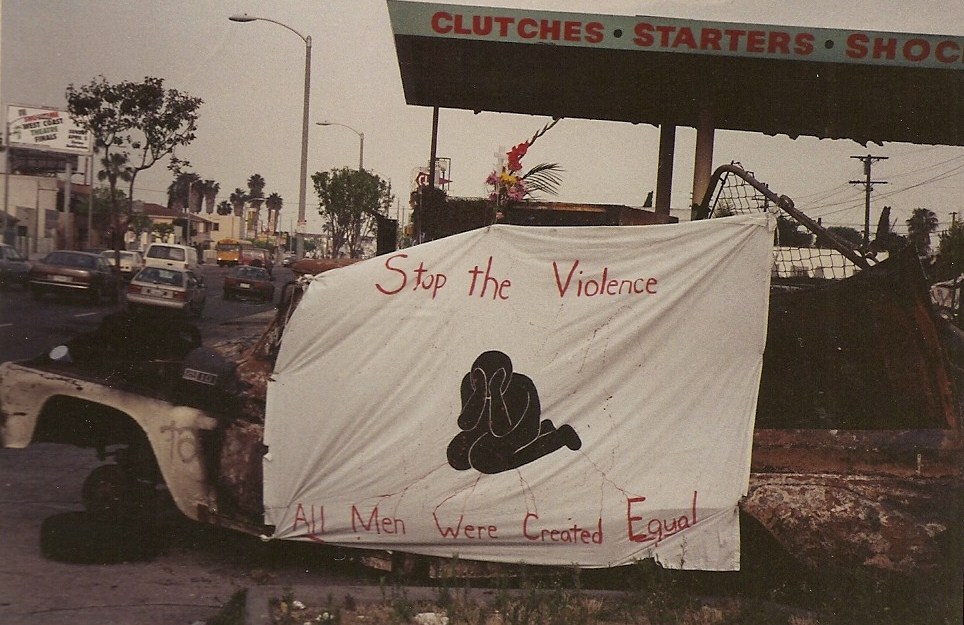
The 1992 Los Angeles rebellion has significant resonance for the current moment. Race, crime, and justice continue to be central to debates about full inclusion and citizenship in American society.
Reflecting on the 1992 rebellion reveals how the reliance on punitive policies created hostility between the police and inner city residents, fed mass incarceration, and contributed to urban unrest. It demands an interrogation of the ways law enforcement officers and the criminal justice system not only continue to resist efforts to ensure greater accountability and oversight but also how they police the boundaries of equality and full inclusion in American society.
Learn more about the L.A. Riots:
Abu-Lughod, Janet L. Race, Space, and Riots in Chicago, New York, and Los Angeles (New York: Oxford University Press, 2007)
Cannon, Lou. Official Negligence: How Rodney King and the Riots Changed Los Angeles and the LAPD (Boulder: Westview Press, 1999)
Davis, Mike. “Who Killed Los Angeles? A Political Autopsy.” New Left Review 197 (1993): 3–28.
Independent Commission on the Los Angeles Police Department, “Report of the Independent Commission on the Los Angeles Police Department,” (Los Angeles: The Commission, 1991)
Stevenson, Brenda. The Contested Murder of Latasha Harlins: Justice, Gender, and the Origins of the LA Riots (New York: Oxford University Press, 2013).
Webster, William H., and Hubert Williams. “The City in Crisis: A Report by the Special Advisor to the Board of Police Commissioners on the Civil Disorder in Los Angeles.” Los Angeles, October 21, 1992.
